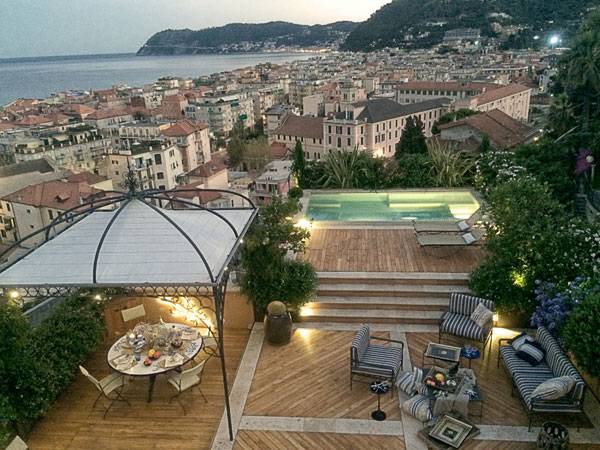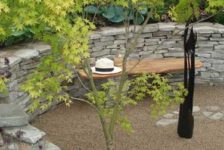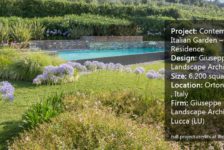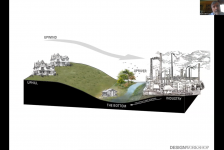Mediterranean Terrace, by Studio S.O.A.P, in Alassio, Italy. “The traveler returning from Italy, with his eyes and imagination full of ineffable Italian garden-magic, knows vaguely that the enchantment exists.” – Edith Wharton Italian gardens, full of fantasy and sensory delight, have never failed to inspire artists and designers throughout the centuries. Travelers who have ever visited Italy share the feeling described by Edith Wharton, and upon viewing the Mediterranean Terrace by Simone Ottonello, we are transported back and forth between the 15th and 21st centuries, realizing that it is not just to foreign designers that Italian Renaissance gardens provide inspiration.
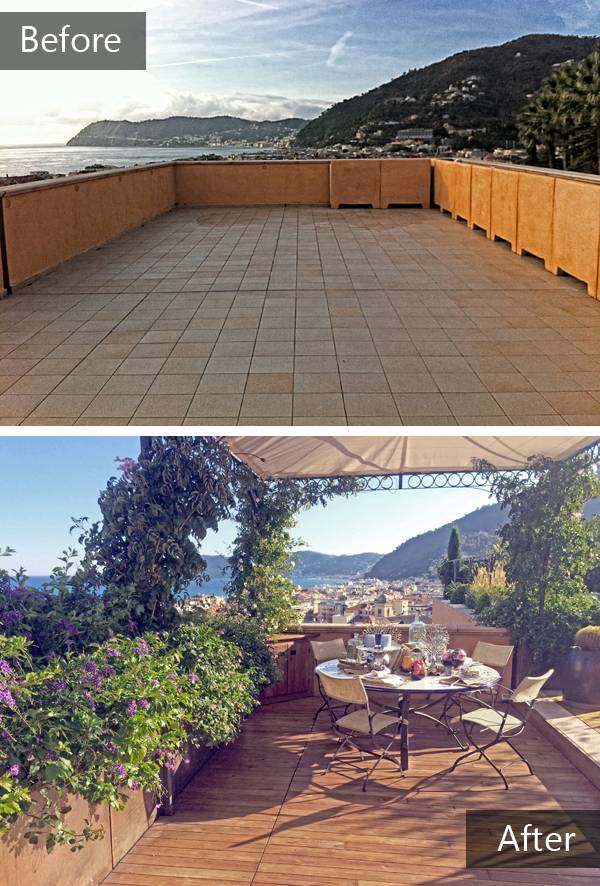
Before and after sequence. Photo credits: Simone Ottonello
Set in Northern Italy
Set just a few miles from the French border in the town of Alassio, on the western coast of Liguria in Northern Italy, what was once a basic, flat surface has been unrecognizably transformed into a terraced garden with immaculate views onto the Mediterranean Sea. Italian Renaissance gardens are inspired by classical ideals of order and beauty, allowing users to savor the sights, sounds, and smells of the garden and to contemplate the garden and the landscape beyond. The Mediterranean Terrace appeals to these ideals, yet remains true to our time through the introduction of modern elements and functions.

Photo credit: Simone Ottonello
Understanding The Italian Style
The classical Italian style of the garden terrace can be deduced from the symmetry and geometry. The geometric design in the old Italian gardens often features walls with a central fountain. The boundary in the Mediterranean Terrace arises from elegant metal fencing and low walls, but geometry arises from the building façade in which the outside living area corresponds to the inside living area, and the outside dining area corresponds to the inside dining area.
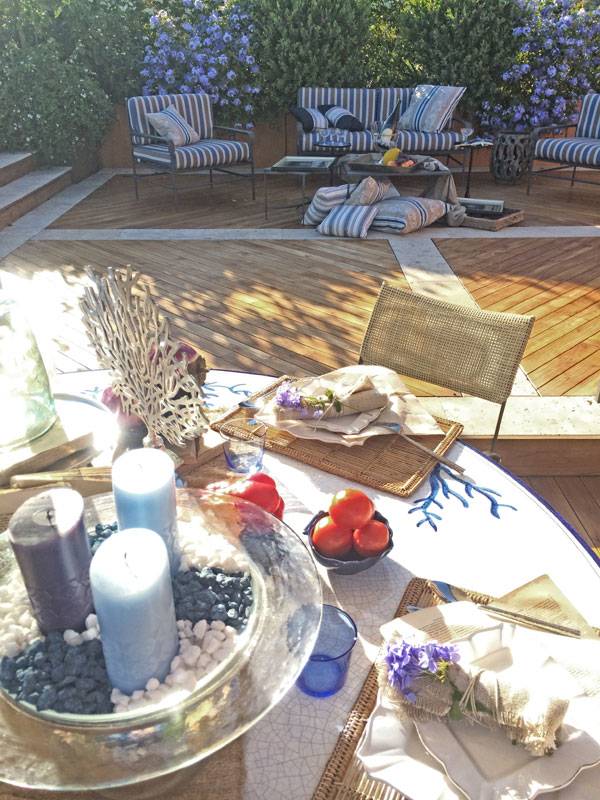
Photo credit: Simone Ottonello
- Floating Roof Garden on the River Thames
- Luxurious Small Urban Garden Getaway
- Cantilever Pool with the WOW Factor!

Photo credit: Simone Ottonello
A Fascination With Water
Old Italian Renaissance gardens also show a fascination with water — the mechanics of the supply of water, the beauty it adds to a garden, and the fun to be had in drenching unsuspecting visitors. Although there are no such fountains to be found in this terrace garden, we find a swimming pool on the top terrace, complete with sun beds — fittingly created for the relaxation of 21st century Italians.
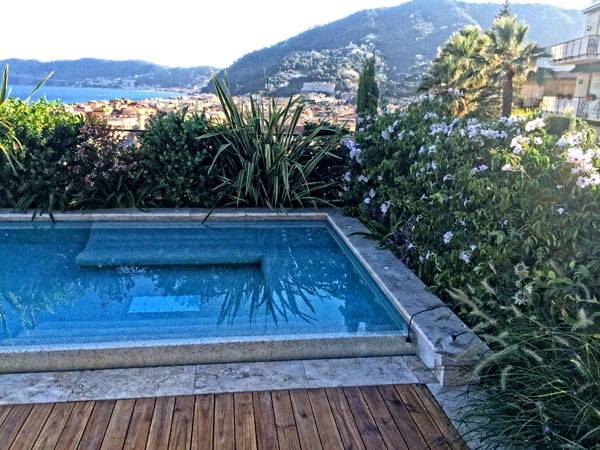
Photo credit: Simone Ottonello
Planting on The Mediterranean Terrace
In the Mediterranean Terrace, plantings are never too far away. The chosen planting species are evergreen and fragrant in all months of the year. The top terrace with the swimming pool features plantings that intimately border the edge. The shrubs appear to be at the same level as the pavement. This is because the steel vases that hold them are under the deck and concealed in a clever manner. Recommended Reading:
- Sun-Drenched Gardens: The Mediterranean Style by Jan Smithen
- Designing and Creating a Mediterranean Garden by Freda Cox
The plants are meticulously chosen for specific purposes, like actors having specific roles in a play. Tall plants are used to provide privacy from the other buildings. In areas where one can appreciate the panorama, shorter plants have been arranged. Take a look at the shaded shelter on the terrace dedicated for dining, which features plantings that hug the edge of the corners to elegantly frame the views. Reference to old Italian gardens is also made through the plant selection: There are Cypresses as columns, Phormium as fountains, and boxwoods as spheres.
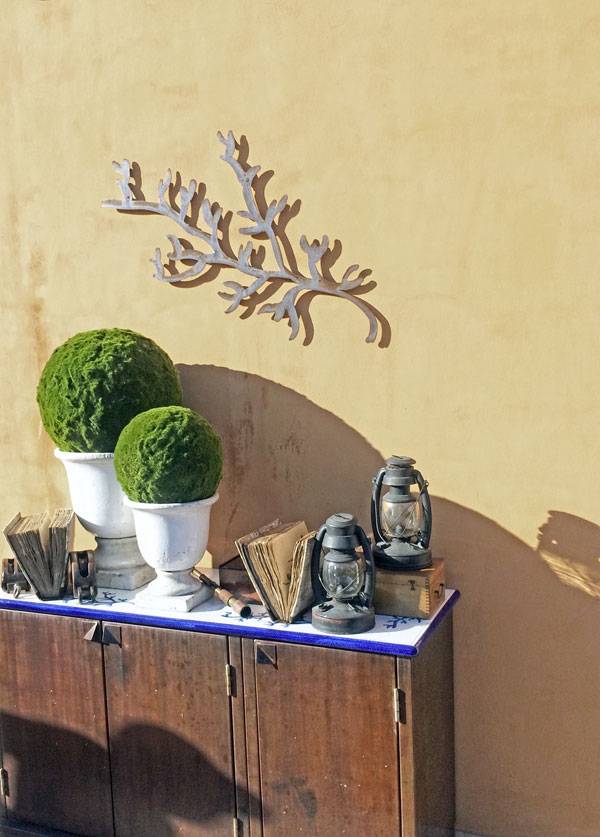
Photo credit: Simone Ottonello
A Magical Transformation
The garden has been transformed from a blank, single terrace overlooking the vast panoramic view to one with three levels, each specifically dedicated for a function: dining, outdoor living area, and swimming pool with sun beds. At first glance, the Mediterranean Terrace looks like a modern terrace set amongst the surrounding seascape and townscape. It looks simple, yet enchanting. Why is that so? It is not because the Italian weather reveals bluer skies and richer vegetation. Recommended Reading:
- Sun-Drenched Gardens: The Mediterranean Style by Jan Smithen
- Designing and Creating a Mediterranean Garden by Freda Cox
IN FACT, WE DON’T SEE A VAST VARIETY OF VEGETATION, and the symmetrical, geometric effect produces repetition, which could be described as dull and monotonous. However, the enchantment comes from the impressions the designer has left upon the terrace garden, with a thoughtful and concise manner in the carefully chosen and crafted details. The delicately crafted works of Italian gardens are what make them magical. The Mediterranean Terrace allows for simple contemplation and viewing, and it also allows for a closer study of details that are in harmony and in balance with one another.
Full Project Credits For The Mediterranean Terrace, by Studio S.O.A.P
Location: Alassio, Itlay Designer: Studio S.O.A.P, Simone Ottonello Landscape Architect Consultant: Arch. Carlo Berio and Ing. Bruno Martini Lighting: E2000 Decking: TeakWoodSA Swimming Pool: Silver Piscine Gardening: Michelini Garden Services Size: Around 140m2 Website: www.soapstudio.com Recommended Reading:
- Sun-Drenched Gardens: The Mediterranean Style by Jan Smithen
- Designing and Creating a Mediterranean Garden by Freda Cox
Article by Win Phyo Return to Homepage
Published in Blog



